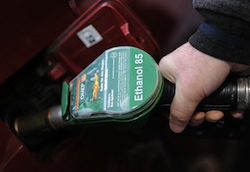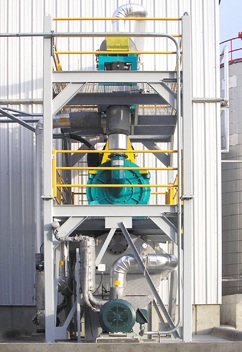![]() Two ethanol makers will be trying Syngenta’s Enogen® grain… corn that is bio-engineered to allow ethanol production to be more efficient, cost effective and better for the environment. This Syngenta news release says Golden Grain Energy (GGE) of Iowa and Siouxland Ethanol of Nebraska agreed to run three-month trials.
Two ethanol makers will be trying Syngenta’s Enogen® grain… corn that is bio-engineered to allow ethanol production to be more efficient, cost effective and better for the environment. This Syngenta news release says Golden Grain Energy (GGE) of Iowa and Siouxland Ethanol of Nebraska agreed to run three-month trials.
![]() Enogen grain is the first genetically engineered output trait in corn specifically for the ethanol industry. Enogen corn expresses the alpha amylase enzyme necessary for dry grind ethanol production directly in the endosperm of the grain. This breakthrough technology eliminates the need to add liquid amylase and can lead to dramatic increases in throughput while potentially reducing costs in energy, gas and water usage.
Enogen grain is the first genetically engineered output trait in corn specifically for the ethanol industry. Enogen corn expresses the alpha amylase enzyme necessary for dry grind ethanol production directly in the endosperm of the grain. This breakthrough technology eliminates the need to add liquid amylase and can lead to dramatic increases in throughput while potentially reducing costs in energy, gas and water usage.
“We’re glad to be partnering with these plants and we’re excited about the improved efficiency Enogen technology can deliver,” said David Witherspoon, head of renewable fuels with Syngenta. “We’re looking forward to working closely with each plant during the trial to demonstrate the value Enogen technology can add to their operation and their community.”
The trials are to begin next spring. If it works out, growers will be paid a premium for each bushel of Enogen corn delivered to the plants.







 The U.S. Appeals Court for the District of Columbia Circuit has sided with the Environmental Protection Agency (EPA) and upheld its partial waiver approval for E15 ethanol fuel for model year 2001 and newer light duty vehicles and all flex fuel vehicles.
The U.S. Appeals Court for the District of Columbia Circuit has sided with the Environmental Protection Agency (EPA) and upheld its partial waiver approval for E15 ethanol fuel for model year 2001 and newer light duty vehicles and all flex fuel vehicles. 